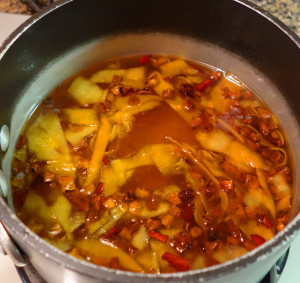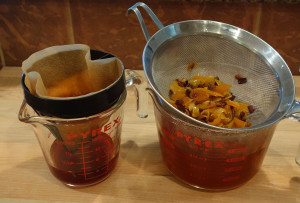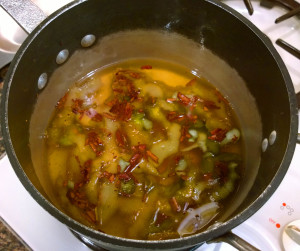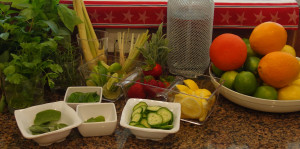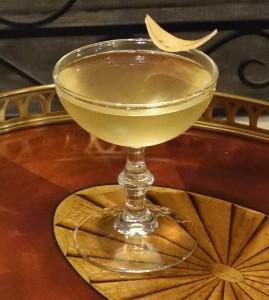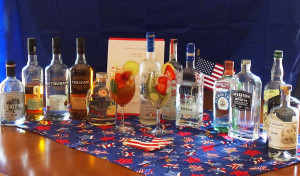 As busy host/hostess, anytime you can offer a fun, engaging, self-serve cocktail bar, expect your guests to rave about your entertaining prowess! A tonic bar is a simple way to allow your guests open access to create their own drinks while you get to enjoy your party too. Its versatility works great for casual outdoor gatherings and equally well for holiday festivities.
As busy host/hostess, anytime you can offer a fun, engaging, self-serve cocktail bar, expect your guests to rave about your entertaining prowess! A tonic bar is a simple way to allow your guests open access to create their own drinks while you get to enjoy your party too. Its versatility works great for casual outdoor gatherings and equally well for holiday festivities.
 Before we address the blue print for a great libation station, let’s look at the recent transformation of the venerable Gin and Tonic. About ten years ago, the “Gin Tonic” became the rage in Spain. Bars developed their own, proprietary Tonic Waters with which they prepared beautiful cocktails in over-sized, stemmed wine glasses, filled with colorful fresh citrus and herbs. Drinking establishments take pride in featuring their version of the “Gin Tonic.”
Before we address the blue print for a great libation station, let’s look at the recent transformation of the venerable Gin and Tonic. About ten years ago, the “Gin Tonic” became the rage in Spain. Bars developed their own, proprietary Tonic Waters with which they prepared beautiful cocktails in over-sized, stemmed wine glasses, filled with colorful fresh citrus and herbs. Drinking establishments take pride in featuring their version of the “Gin Tonic.”
The most important ingredient in gin, and the one necessarily present in all gins, is juniper. Beyond that, it’s the Wild West, because there is no minimum amount of juniper required for a spirit to be labeled ‘gin.’ A single juniper berry in a vat of spirit qualifies as ‘gin.’
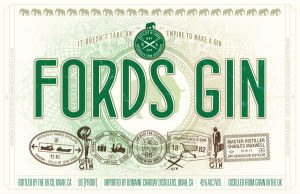 I had an opportunity to discuss Gin and Tonics with Jason Kosmas, Co-founder of The 86 Company, (Fords Gin among others), Co-founder of Employees Only and Co-author of Speak Easy. According to Jason, just about any premium brand of gin can be used for Gin and Tonics. Jason prefers that juniper be an actual flavor present in gin, followed by citrus and various herbs. When determining what will go best with any particular gin, Jason encourages us to “read the back label” and see what is in the gin. With Fords Gin, he suggests creating a cocktail with the addition of grapefruit, coriander, lemon, and jasmine.
I had an opportunity to discuss Gin and Tonics with Jason Kosmas, Co-founder of The 86 Company, (Fords Gin among others), Co-founder of Employees Only and Co-author of Speak Easy. According to Jason, just about any premium brand of gin can be used for Gin and Tonics. Jason prefers that juniper be an actual flavor present in gin, followed by citrus and various herbs. When determining what will go best with any particular gin, Jason encourages us to “read the back label” and see what is in the gin. With Fords Gin, he suggests creating a cocktail with the addition of grapefruit, coriander, lemon, and jasmine.
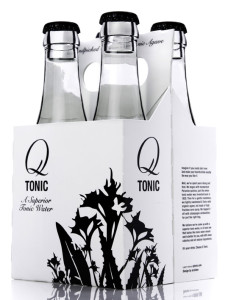
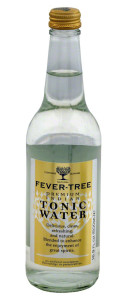 When it comes to tonic water, there are several good premium brands readily available. Jason mentioned Fever Tree, East Imperial and Q Tonic. He looks for natural ingredients and sugars. The flavor should be quinine first and dry rather than sweet.
When it comes to tonic water, there are several good premium brands readily available. Jason mentioned Fever Tree, East Imperial and Q Tonic. He looks for natural ingredients and sugars. The flavor should be quinine first and dry rather than sweet.
For garnishes, Jason looks to rosemary for “woodsy,” and he likes grapefruit, dries spices, star anise, aromatic berries such as strawberry, cucumber and/or fresh lavender. For sweeteners, he recommends agave, dried flowers and even herbal tea blends.
Of course, as Jason says: “It can’t be a Gin Tonic without the big, stemmed wine glass!”
The Tonic Bar
To engage your guests with making their own Gin Tonics, set your Tonic Bar up in an easily accessible area where multiple people can be actively concocting. Your actual tonic bar can be as minimalist or as expansive as you like. You can offer only a single gin, vodka or rum, or multiple choices of each. We include little tasting cups so that our guests can sample the spirits before selecting one. (The plastic tasting cups were one lifetime supply purchase from Costco – approximately a thousand for $10!)
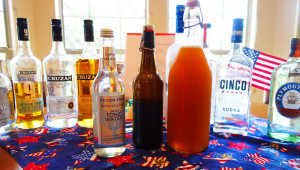
Fever Tree, Tonic Syrups for Rum and for Gin
Now for the tonic water. We like to offer at least one house made tonic syrup. A small amount of tonic syrup is added to carbonated water in the drink to make tonic water, (our recipes are here). These syrups are designed for a specific spirit and make wonderful cocktails. However, we have found that while our guests like it when we make one these for them, when left on their own, they will usually opt for bottled tonic water. We continue to offer the tonic syrup, but we always include one premium brand of tonic water – usually Fever Tree. We also use the small bottles so that there is no measuring required.
However many choices of spirit you offer, don’t skimp on the garnishes. Arrange bunches of fresh herbs in single old fashioned glasses, with small bowls of sliced citrus and berries. If some of your herbs are less than attractive, pinch off the leaves and present them in small bowels as well. Release your imagination with the variety of flavors, colors and textures of garnishes and the containers in which you offer them. The more inviting the presentation, the more your guests will be encouraged to experiment and enjoy their mixology talents. Here are some suggestions:
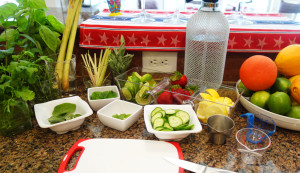
- Lemon & Lime Wheels
- Lemon & Lime Peels
- Grapefruit Peels
- Sliced Berries
- Cucumber Slices
- Fresh Lavender
- Fresh Rosemary
- Fresh Thyme/Lemon Thyme
- Fresh Sage
- Kaffir Lime Leaves
- Lemon Grass
- Fresh Cilantro
- Fresh Pineapple
- Coriander
- Fresh Hibiscus Flowers

Set up your Tonic Bar where it is easily accessible
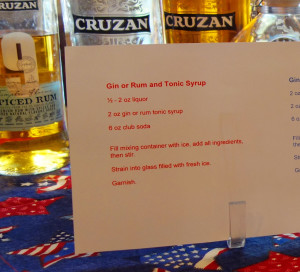
Little recipe placards make it easy for your guests
As noted above, set your Tonic Bar up in an easily accessible location. We use a round table. Set out your bottles of spirits, a few bottles of tonic water along with a bottle opener, and garnishes. You might want to set your glassware and ice bucket on a separate counter. This will minimize the chance that they get knocked over while someone is reaching for ingredients. We always include a written recipe with suggestions of garnishes for each spirit. This will eliminate any anxiety your guests may have over not knowing what to make. You want to keep it simple and fun.

A knife and cutting board allows guests to prepare their own garnishes
To get things started, make up a Gin Tonic so everyone can see how it’s done. Those guests can then show any late comers when they arrive. You will then only need to refresh any garnishes, tonic water bottles and ice.
Recipe for Gin, Rum or Vodka Tonics
- 2 oz Spirit – either Gin, Rum or Vodka
- 6 oz. Tonic Water (1 1/2 oz Tonic Syrup and 4 1/2 oz. Carbonated Water)
- Optional dash of simple syrup for gin or vodka/demerara simple syrup for rum
- Garnish – see below
Instructions:
- Add ice cubes to a large, stemmed wine glass
- Add garnishes except for any citrus peels for expressing
- Add your Spirit of choice
- Slowly add the Tonic Water (or Tonic Syrup followed by the carbonated water).
- Express any citrus peels and serve
Suggested Garnishes:
Gin or Vodka
- Lemon & Lime Wheels
- Lemon & Lime Peels
- Grapefruit Peels
- Sliced Berries
- Cucumber Slices
- Fresh Lavender
- Fresh Rosemary
- Fresh Sage
- Kaffir Lime Leaves
- Lemon Grass
Rum
- Lemon & Lime Wheels
- Lemon & Lime Peels
- Sliced Berries
- Kaffir Lime Leaves
- Fresh Cilantro
- Fresh Pineapple
- Coriander
- Fresh Hibiscus Flowers
- Lemon Grass

Rum Tonic with House Made Tonic Syrup
We have found that our guests enjoy the opportunity to experiment with the Tonic Bar. By offering multiple choices of gin, vodka and rum along with a myriad of garnishes, you enable your guests to explore a range of Gin Tonics. Our guests tend to lower the amount of spirit in each drink thus allowing themselves to try multiple variations. If some of your guests may be a little more stayed or if you just wish to expand the offerings, set out a few old fashioned glasses so someone can make a standard Gin or Vodka and Tonic. Throw in a bottle of vermouth and martini glasses and your guests can head down that road. As always, we offer self serve wine and beer along with non-alcohol options.
Cheers!
 Here I go offering another cocktail crafted with Nelson’s Green Brier Tennessee White Whiskey*. As I’ve written previously, it is single distilled from a mash of corn, barley and wheat which gives it some subtle, but distinct, differences from other premium white whiskeys. I think Nelson’s Green Brier is slightly sweeter and contains a malt/chocolate note, but still present is the ‘bite’ you would expect from white whiskey. A lot of recipes try to cover up the ‘bite’ of white whiskey with fruit juices or other sweeteners. I wanted to highlight the hint of chocolate without increasing the sweet. While I consider this a dessert cocktail, it isn’t cloying and allows the ‘bite’ to add character to the party. Adding 4-5 drops of Bittermens Mole Bitters will decrease the sweetness and increase the complexity.
Here I go offering another cocktail crafted with Nelson’s Green Brier Tennessee White Whiskey*. As I’ve written previously, it is single distilled from a mash of corn, barley and wheat which gives it some subtle, but distinct, differences from other premium white whiskeys. I think Nelson’s Green Brier is slightly sweeter and contains a malt/chocolate note, but still present is the ‘bite’ you would expect from white whiskey. A lot of recipes try to cover up the ‘bite’ of white whiskey with fruit juices or other sweeteners. I wanted to highlight the hint of chocolate without increasing the sweet. While I consider this a dessert cocktail, it isn’t cloying and allows the ‘bite’ to add character to the party. Adding 4-5 drops of Bittermens Mole Bitters will decrease the sweetness and increase the complexity.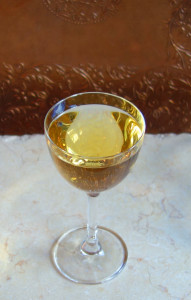


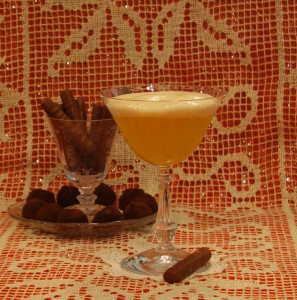
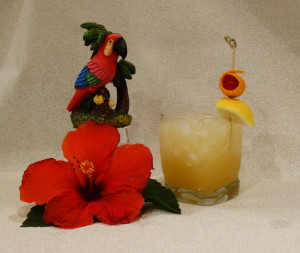

 As busy host/hostess, anytime you can offer a fun, engaging, self-serve cocktail bar, expect your guests to rave about your entertaining prowess! A tonic bar is a simple way to allow your guests open access to create their own drinks while you get to enjoy your party too. Its versatility works great for casual outdoor gatherings and equally well for holiday festivities.
As busy host/hostess, anytime you can offer a fun, engaging, self-serve cocktail bar, expect your guests to rave about your entertaining prowess! A tonic bar is a simple way to allow your guests open access to create their own drinks while you get to enjoy your party too. Its versatility works great for casual outdoor gatherings and equally well for holiday festivities. Before we address the blue print for a great libation station, let’s look at the recent transformation of the venerable Gin and Tonic. About ten years ago, the “Gin Tonic” became the rage in Spain. Bars developed their own, proprietary Tonic Waters with which they prepared beautiful cocktails in over-sized, stemmed wine glasses, filled with colorful fresh citrus and herbs. Drinking establishments take pride in featuring their version of the “Gin Tonic.”
Before we address the blue print for a great libation station, let’s look at the recent transformation of the venerable Gin and Tonic. About ten years ago, the “Gin Tonic” became the rage in Spain. Bars developed their own, proprietary Tonic Waters with which they prepared beautiful cocktails in over-sized, stemmed wine glasses, filled with colorful fresh citrus and herbs. Drinking establishments take pride in featuring their version of the “Gin Tonic.”










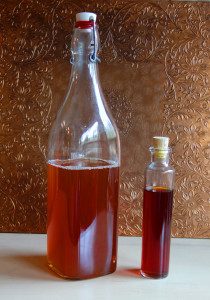 I had an opportunity to discuss Gin and Tonics with Jason Kosmas, Co-founder of The 86 Company, (Ford’s Gin among others), Co-founder of Employees Only and Co-author of
I had an opportunity to discuss Gin and Tonics with Jason Kosmas, Co-founder of The 86 Company, (Ford’s Gin among others), Co-founder of Employees Only and Co-author of 
